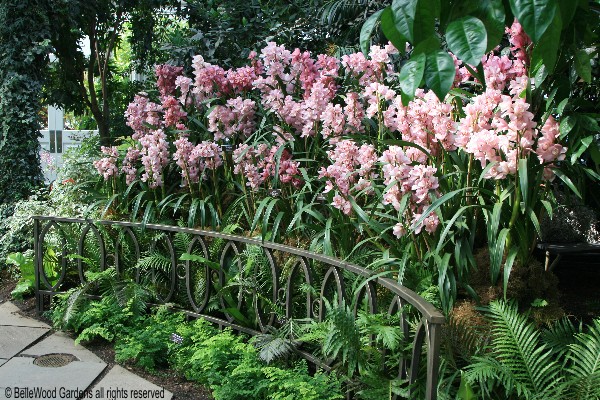
Thursday, 24 March 2011
Orchid Show at the New York Botanical Garden
Orchids are the most diverse among the world's plant families, with an estimated 30,000 species. The most rapidly changing group of plants and adaptable, there are terrestrial and epiphitic orchids, orchids that grow in the rain forests, temperate forests, open grasslands, moist to swampy habitats - there is even an Australian orchid that grows completely underground. Highly evolved, orchids have unique relationships with their pollinators and require specific fungus to germinate. When it comes to seed production orchids rely on quantity. The dustlike seeds (anywhere from 10,000 to 3 million) within a single pod are dispersed by the wind. Their patrimony is lacking - no food reserves to nourish the germinating seedling. It must have a symbiotic relationship with a fungus - the seedling providing the products of photosynthesis while the fungus provides nutrients. In nature very, very few of the orchid seeds manage to germinate and survive. No wonder they have such particular, specific, intimate relationships with the ecology of their habitats.
Orchids willingly crossbreed, not merely between species but even across genera. When a hybrid cross is made, all of the seedlings grown from the resulting seed pod are considered to be in the same grex (a word from Latin, referring to a flock.) Though they all have the same grex name, the orchids raised from that one seed capsule are not identical.

Genus and species names are written in italics. Cultivar names are written in Roman typeface and
set off with a single quote mark at beginning and end. A grex name is also written in Roman typeface
but will not have quote marks. The orchids massed here are Cymbidium Enzan Stream, a grex name.
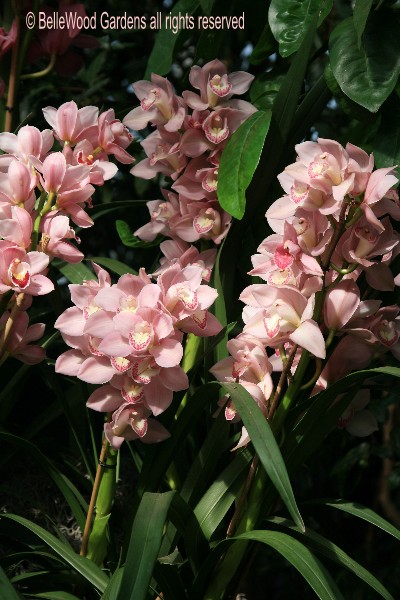
While here we see Cymbidium Enzan Stream 'In The Mood' - it belongs to the Enzan Stream grex
and the single quote marks let us know that 'In The Mood' is a cultvar name for this specific selection.
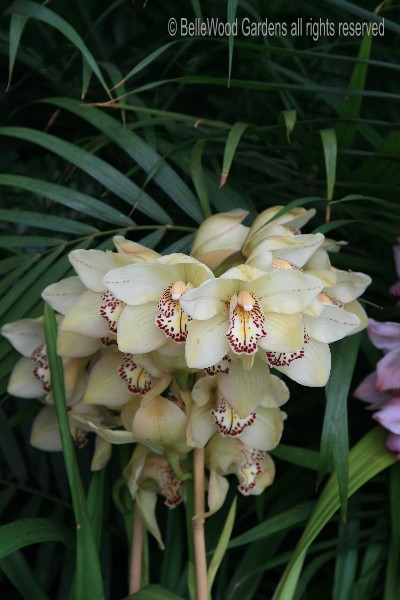
Here are two beauties: Cymbidium Featherhill Fanfare 'Desert Sands' and
Cymbidium Marie Bashir 'Lamp Lighter' - different grex, different cultivars.
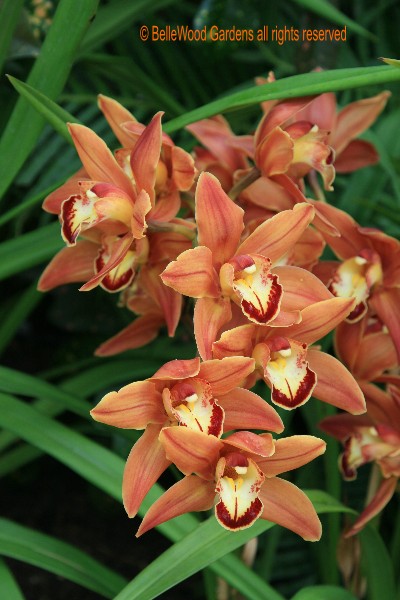
.
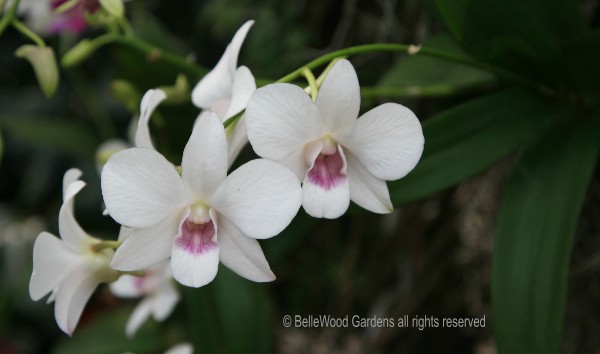
Above is one of the cane orchids, Dendrobium, a genus that's popular with home growers.
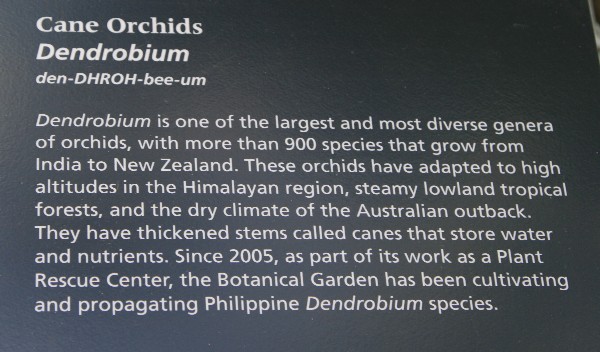
.
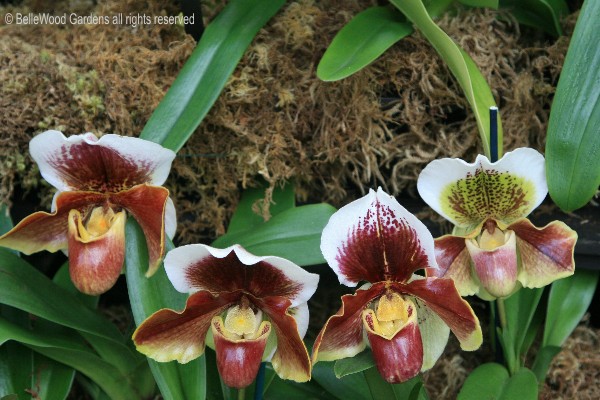
Similar in form to the hardy ladyslipper orchids found in terrestrial woodlands, Paphiopedium are
native to South China, India, Southeast Asia and the Pacific Islands. Their elegant appearance and
fairly simple cultural needs make them popular with home orchid growers. The grex is Tokyo Chilwin.
.
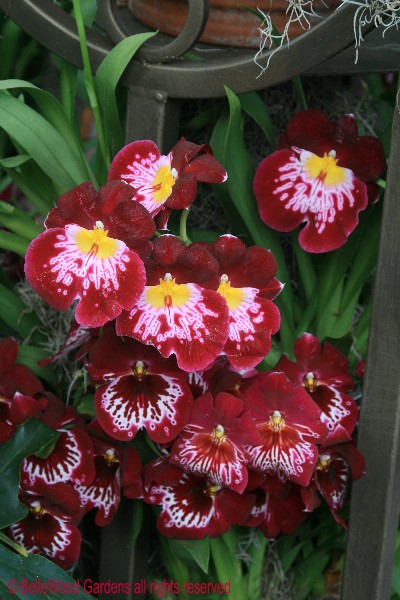
A complicated name for this pansy-faced beauty. It is
Miltoniopsi Hajime Ono 'Maui Falls' × 'Nainoa' You'll
need to write small if you want to fit all of it on a label.
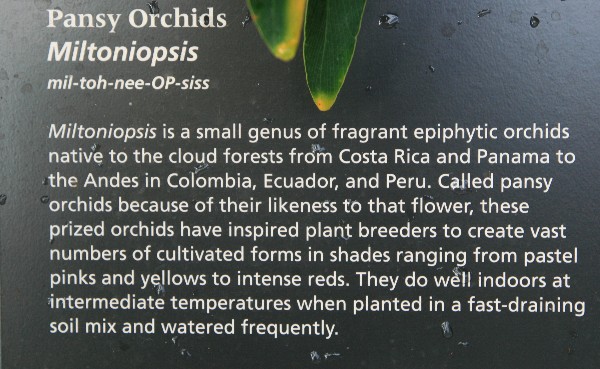
.
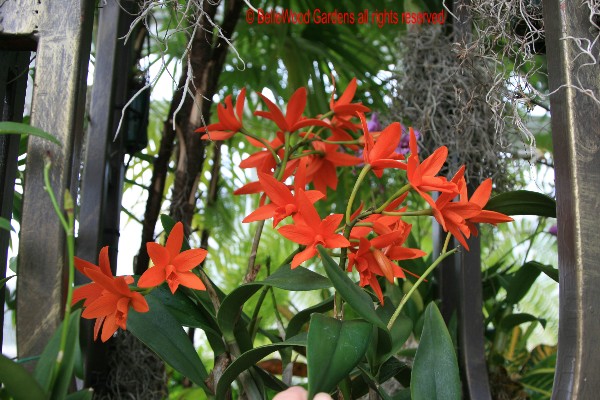
Here's a bi-generic cross of Cattleya x Guarianthe: ×Callianthe Trick or Treat 'NN'
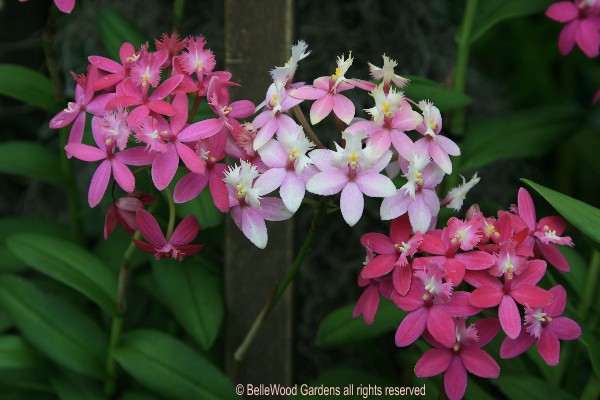
EpidendrumStar Valley 'Violet Queen' The center of each flower looks like a little bird to me.
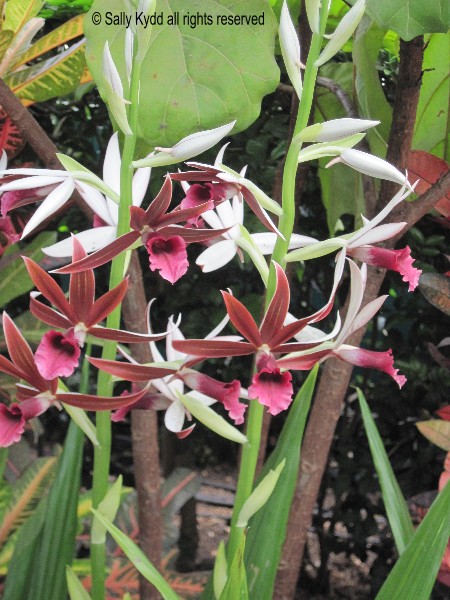
Photo credit Sally Kydd. All rights reserved
Phaius tankervilleae 'Rabin's Raven' is a stunning plant with chocolate brown flowers,
15 or more to a stem that often reaches 4 feet tall. Nun's orchid is terrific in USDA zone 10
gardens, but likely to be awkward in cooler climates if you don't have a greenhouse.
These and many other fantastic orchids may be enoyed at the orchid show which is open from 5 March through 25 April.
hours are 10 a.m.-6 p.m., Tuesday-Sunday. Closed Mondays except for April 25, 10 a.m.-6 p.m. Tickets may be ordered on-line
Free to members, tickets are priced at $20 for adults, seniors and student tickets are $18. Children, $8, under 2 are admitted free.